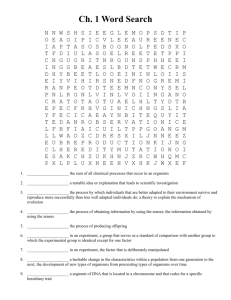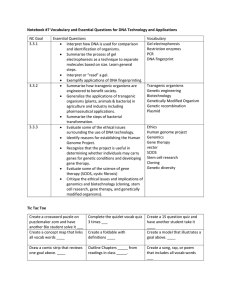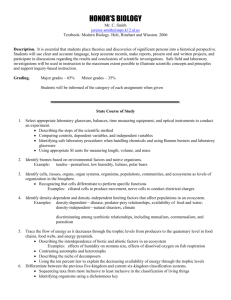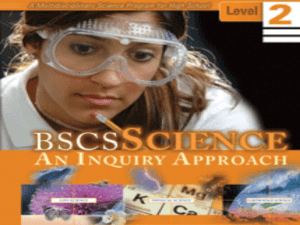Biology EOC Semester 2 - PIB
advertisement
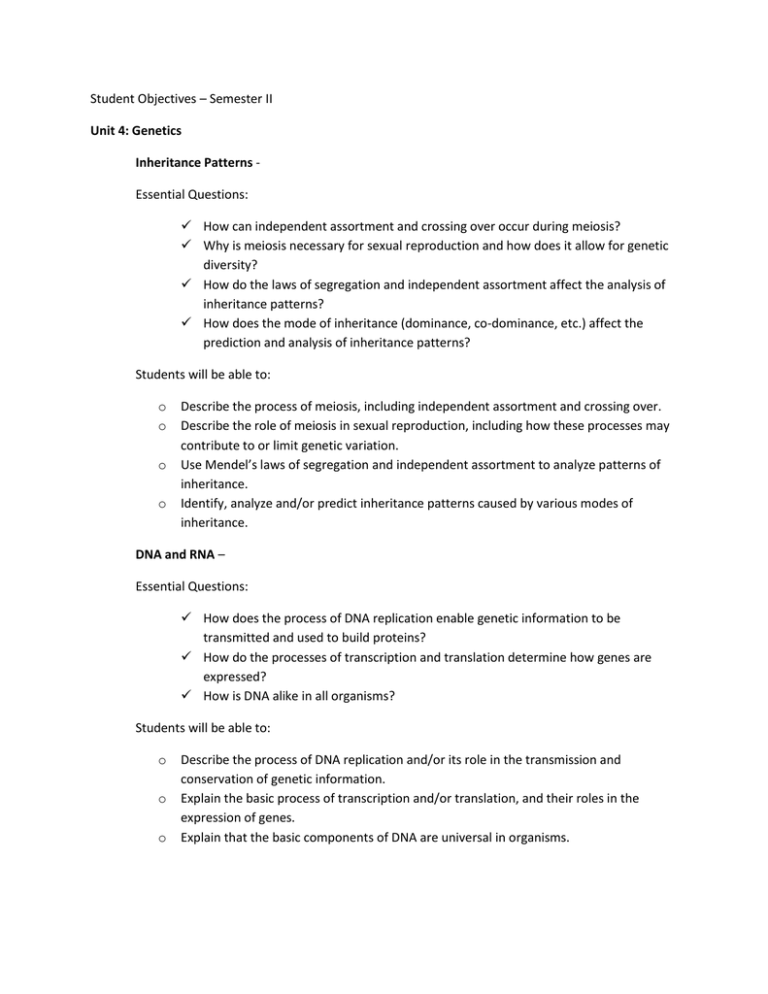
Student Objectives – Semester II Unit 4: Genetics Inheritance Patterns Essential Questions: How can independent assortment and crossing over occur during meiosis? Why is meiosis necessary for sexual reproduction and how does it allow for genetic diversity? How do the laws of segregation and independent assortment affect the analysis of inheritance patterns? How does the mode of inheritance (dominance, co-dominance, etc.) affect the prediction and analysis of inheritance patterns? Students will be able to: o o o o Describe the process of meiosis, including independent assortment and crossing over. Describe the role of meiosis in sexual reproduction, including how these processes may contribute to or limit genetic variation. Use Mendel’s laws of segregation and independent assortment to analyze patterns of inheritance. Identify, analyze and/or predict inheritance patterns caused by various modes of inheritance. DNA and RNA – Essential Questions: How does the process of DNA replication enable genetic information to be transmitted and used to build proteins? How do the processes of transcription and translation determine how genes are expressed? How is DNA alike in all organisms? Students will be able to: o o o Describe the process of DNA replication and/or its role in the transmission and conservation of genetic information. Explain the basic process of transcription and/or translation, and their roles in the expression of genes. Explain that the basic components of DNA are universal in organisms. Human Genetics – Essential Questions: How can DNA mutate? Why don’t all mutations result in visible change? Students will be able to: o o Describe gene and chromosomal mutations in the DNA sequence. Explain how gene and chromosomal mutation may or may not result in a phenotypic change. Genetic Engineering – Essential Questions: Why do scientists use DNA as evidence that all organisms are related? How can biotechnology have positive and negative impacts on society? Students will be able to: o o Explain how similarities in the genetic codes of organisms are due to common ancestry and the process of inheritance. Evaluate examples and/or explain the possible impact of biotechnology on the individual, society and/or the environment. Unit 5: Evolution Theory of Evolution – Essential Question: How is the scientific theory of evolution supported by evidence? How is a scientific claim evaluated? How do you determine if a source is reliable according to scientific standards? How do observations lead to scientific inferences in Biology? How does science differ from pseudo-science? How is a theory developed? How do you decide if something is a theory or a law? What conditions must be present for natural selection to result in a difference in reproductive success? How do mechanisms like genetic drift, gene flow and nonrandom mating result in evolutionary change? How do mutation and genetic recombination increase genetic variation? How are molecular clocks used to estimate how long ago various groups of organisms diverged from each other? How does the Hardy Weinberg equation predict genotypes in a population? Students will be able to: o o o o o o o o o o o o Identify evidence and/or explain how the scientific theory of evolution is supported by the fossil record, comparative anatomy, comparative embryology, biogeography, molecular biology and observable evolutionary change. Identify ways in which a scientific claim is evaluated (e.g. through scientific argumentation, critical and logical thinking and consideration of alternative explanations). Assess the reliability of sources of information according to scientific standards. Describe how scientific inferences are made from observations and identify examples from biology. Identify what is science, what is not science and what resembles but fails to meet the criteria for science. Explain the development of a theory. Recognize the differences between theories and laws. Explain and/or describe the conditions required for natural selection that result in differential reproductive success. Explain and/or describe the scientific mechanisms, such as genetic drift, gene flow, and nonrandom mating, resulting in evolutionary; change. Explain and/or describe how mutation and genetic recombination increase genetic variation. Discuss the use of molecular clocks to estimate how long ago various groups of organisms diverged evolutionarily from one another. Use Hardy-Weinberg equation to predict genotypes in a population. Geologic Time – Essential Questions: How have hominids changed through evolution from early ancestors to modern humans? How do scientists explain the origin of life on earth? What situations and conditions contributed to the origin of life on earth? Students will be able to: o o o Identify examples of and basic trends in hominid evolution from early ancestry to modern humans. Describe scientific explanations for the origin of life on Earth. Identify situations or conditions contributing to the origin of life on Earth. Unit 7: Ecology Plants – Essential Question: How are the structures of plant tissues and organs directly related to their roles in physiological processes? Students will be able to: o Explain how the structures of plant tissues and organs are directly related to their roles in physiological processes. Cycles of Matter – Essential Questions: How does matter move through different biogeochemical cycles (such as carbon through the carbon cycle)? How can energy be transformed from one form to another? Students will be able to: o o Analyze the movement of matter through different biogeochemical cycles. Differentiate among various forms of energy and that they can be transformed from one form to another. Ecosystems and Communities – Essential Questions: How do organisms cooperate and compete in ecosystems? How does energy move through a food web or energy pyramid? How can ecosystems be changed by seasonal variations, climate changes and succession? Students will be able to: o o o Explain how organisms cooperate and compete in ecosystems. Describe the energy pathways through the different trophic levels of a food web or energy pyramid. Describe the potential changes to an ecosystem resulting from seasonal variations, climate changes and /or succession. Populations – Essential Questions: What affects carrying capacity and how can it affect the population size of an ecosystem? How does the chemistry, geography, light, depth, salinity and/or temperature of an aquatic system affect what organisms can live there? How can reducing biodiversity positively or negatively impact ecosystems and humans? How do you assess the reliability of sources of information according to scientific standards? Students will be able to: o o o o Use data and information about population dynamics, abiotic factors and/or biotic factors to explain and/or analyze a change in carrying capacity and its effect on population size in an ecosystem. Explain that different types of organisms exist within aquatic systems due to chemistry, geography, light, depth, salinity and/or temperature. Identify positive and/or negative consequences that result from a reduction in biodiversity. Assess the reliability of sources of information according to scientific standards. Humans in the Biosphere – Essential Questions: How can the actions of humans impact environmental systems and/or affect sustainability? How can the environmental impacts of using renewable and nonrenewable resources differ? How can scientific claims be evaluated? Students will be able to: o o o Predict how the actions of humans may impact environmental systems and/or affect sustainability. Evaluate possible environmental impacts resulting from the use of renewable and/or nonrenewable resources. Identify ways in which a scientific claim is evaluated (e.g., through scientific argumentation, critical and logical thinking and/or consideration of alternative explanations).


